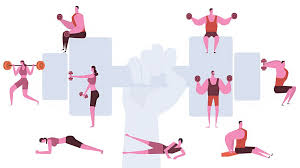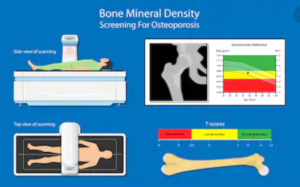It’s a fact of life:
As you age, your bones become thinner and lose their density. Over time, you become more prone to injury.
Fortunately, you can take steps to halt the “thinning” of your bones, called osteopenia, and prevent osteoporosis.
1. Eat lots of vegetables.

Vegetables are the simplest source of vitamin C, which stimulates the production of bone-forming cells. Greens and yellows are shown in studies to assist with bone mineralization.
2. Perform strength training.
 Strength work out is particularly important for those that suffer from lower extremity joint deficiencies like knee or hip arthritis, which are conditions that will limit your ability to perform a weight-bearing exercise.
Strength work out is particularly important for those that suffer from lower extremity joint deficiencies like knee or hip arthritis, which are conditions that will limit your ability to perform a weight-bearing exercise.
“The key’s resistance training ― or bone loading. This suggests lifting lighter weights with higher repetitions could also be robbing you of the bone health benefits provided by strength training, which focuses on increasing the resistance of the weights,” says Orthopedist.
Start by performing one to 2 sets of 10 to 12 repetitions, working to muscle fatigue and increasing the intensity as you go. To realize maximal benefits with minimal risk, proper breathing and technique are important factors for safe lifting.
Travers stresses the importance of seeking the recommendation of a fitness professional before starting a rigorous strength educational program.
3. Add “Vitamin-D” to your day.

To help absorb calcium, most adults need 1,000 to 2,000 IU of vitamin D daily, says Orthopedist.
Combined calcium-vitamin D pills usually don’t meet this requirement. Taking a vitamin D supplement will make sure you meet your daily needs.
4. Start weight-bearing exercises.

Weight-bearing exercise is defined as an activity that forces you to maneuver against gravity or gives you resistance as you progress. High-impact weight-bearing exercises are best for building bones. These should be limited if you’ve got been diagnosed with osteopenia or osteoporosis.
Examples of high-impact exercises include:
• Running or jogging.
• High-impact aerobics.
• Stair climbing.
• Dancing.
• Sports like tennis or basketball.
• Be bound to clear any exercise plans together with your doctor first.
5. Don’t smoke and don’t drink excessively.
 Bad news for bad habits: Loss of bone mineral density is related to tobacco use and excessive alcohol consumption. If you smoke, check out a program to assist you to quit. If you drink, the advice is to stick to no more one libation each day.
Bad news for bad habits: Loss of bone mineral density is related to tobacco use and excessive alcohol consumption. If you smoke, check out a program to assist you to quit. If you drink, the advice is to stick to no more one libation each day.
6. Get your bone mineral density tested.
An orthopedist can get a fast and painless “snapshot” of bone health employing a simple X-ray test called DXA. This test analyzes bone mineral density and helps you determine the risks of osteoporosis and fracture. It’s recommended that ladies are tested within two years of menopause. Earlier tests are recommended for men and ladies with certain diseases and for those taking medications that increase risk, like long-term steroid therapy.
7. Consider medication.

Perimenopausal women may consider hormone therapy, especially if they need symptoms of menopause (hot flashes and more), to extend waning estrogen levels, which are linked to bone loss. And ladies and men diagnosed with osteopenia or osteoporosis can take various medications to stop dangerous hip and spine fractures. Ask your Orthopedist about options like bisphosphonates, teriparatide or denosumab. And remember, “None of those medications works without calcium and vitamin D as building blocks,” says an Orthopedist.



